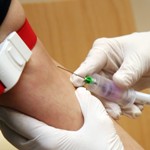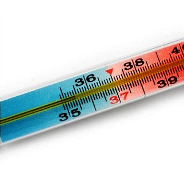 Complications after intramuscular injections
Complications after intramuscular injections

The nurse should clearly understand what complications can be after intramuscular injections and how to avoid them. In the event of complications, the nurse must know the algorithm of medical care for the patient.
So, complications after intramuscular injections can be as follows.
Needle breakage
Infrequently, but it does occur. The reason is a strong muscle contraction with fear of the procedure, an unexpected start of the injection, and improper psychological preparation of the patient.
Help: keeping calm, calm the patient, assure him that everything will be fine. With the !th and 2nd fingers of the left hand, press the tissues on both sides of the broken needle, squeezing it out in this way. With your right hand, take the tweezers, gently grab the tip of the fragment and remove it. The action is repeated several times. In case of unsuccessful attempts, urgently call a doctor through an intermediary, staying with the patient and reassuring him. In the future, follow all the instructions of the doctor.
Periosteum injuries
May occur when administering an intramuscular injection with an overly long needle to a lean patient. Assistance: referral to a surgeon and fulfillment of his appointments. Prevention: correlate the length of the needle with the size of the patient's subcutaneous fat at the site of the intended injection.
Nerve trauma
Such complications after intramuscular injections may occur when the needle is inserted not into the upper-outer quadrant of the buttock, but, for example, into the lower-outer. Nerve trunks can also be damaged when the drug is exposed directly to the nerve tissue. This happens if the drug is injected near the place where the nerve is located.
Help: referral to a doctor and explanation to the doctor of all the circumstances of the injection.
Infiltrates
Causes: rapid administration of the drug, low temperature of the injected drug, insufficient needle length, injections in places near a recent injection or with an old infiltrate.
Help : applying a semi-alcohol compress or the same with the addition of a 25% solution of magnesium sulfate, informing the attending physician.
Abscesses
Very common complications after intramuscular injections .
Reasons: non-compliance with the rules of asepsis and antiseptics, injections into infiltrates, intramuscular injections with a short needle.
Help: urgent referral to a surgeon.
Hematomas
Causes: damage to blood vessels with a needle.
Assistance: referral to a doctor and fulfillment of his prescriptions.
embolism
Oil and suspension embolisms occur when a needle enters the lumen of a blood vessel, followed by the introduction of a medicinal substance. If the syringe is not sufficiently expelled, there is a risk of an air embolism if the entire contents of the syringe are injected into the blood vessel where the needle has entered.
Help: giving the patient a position lying on his side with a raised head end, an immediate call to the doctor through an intermediary.
Prevention: complete expulsion of air from the lumen of the syringe, "pulling" the piston when the needle is inserted with the intention of introducing oil or suspension solutions.
Thrombophlebitis and necrosis
Such complications after intramuscular injections are rare, but they do occur. Thrombophlebitis occurs when blood vessels are damaged, often multiple, followed by soft tissue necrosis.
Help: if the patient complains of severe pain and the presence of hematomas, immediately consult a surgeon.
HIV infection, parenteral hepatitis
Causes: a gross violation of the rules of asepsis and antisepsis when administering intramuscular injections, including the treatment of hands, pre-sterilization cleaning and sterilization of instruments.
Prevention: strict adherence to all existing regulations and sanitary standards during invasive manipulations.
allergic reactions
With the introduction of any drug in a patient, an allergic reaction can occur from hives to anaphylactic shock . The treatment room should be equipped with an anti-shock first aid kit and tools to help with respiratory arrest.
Knowing the possible complications after intramuscular injections, the nurse should make every possible effort to prevent them. And in the event of any complication, be ready to take the necessary actions on your part.





